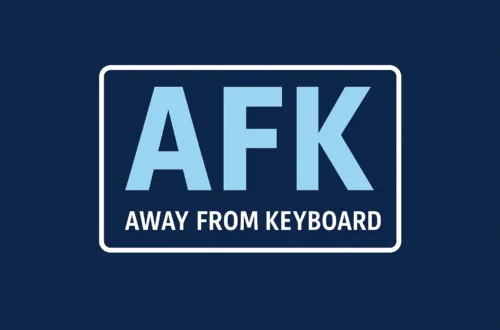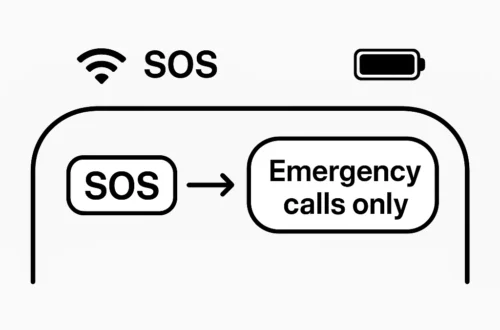Ever heard someone say “Tralalero Tralala” and wondered what it actually means? You’re not alone. The phrase has been circling around TikTok, music videos, memes, and even cultural discussions — leaving people scratching their heads. Is it Italian? Religious? A joke? Or just a bunch of musical nonsense?
Let’s uncover the fascinating story behind this phrase — from its ancient Italian folk roots to its modern-day meme revival.
What Does “Tralalero Tralala” Mean?
At its core, “Tralalero Tralala” doesn’t have a literal meaning in English, Italian, or any other language. It’s made up of onomatopoeic sounds — syllables that imitate the rhythm and melody of singing.
Here’s the simple breakdown:
- “Tralala” is a playful, musical filler used in songs worldwide — like saying “la-la-la.”
- “Tralalero” refers to a traditional Italian folk singing style from Genoa, known as Trallalero.
So when you hear “Tralalero Tralala”, think of it as a joyful blend of rhythm, harmony, and nonsense syllables — a sound made to express feeling, not meaning.
Quick Definition: “Tralalero Tralala” symbolizes the universal language of music — joyful sounds without words.
The Linguistic Roots of “Tralala” and “Tralalero”
To really understand the phrase, let’s break it down linguistically.
The Origin of “Tralala”
“Tralala” is found in folk songs, nursery rhymes, and even operas across Europe. It’s an onomatopoeic expression — meaning it imitates sound rather than carrying meaning.
- First recorded use: Late 18th century in French and German folk songs.
- Purpose: Fill lyrical gaps, imitate humming, or express light-heartedness.
- Modern use: You’ll hear “tralala” in pop music, cartoons, and playful tunes.
For instance, when someone sings “Tra-la-la” while skipping or cleaning, they’re expressing mood — not words. It’s emotion through sound.
The Origin of “Tralalero”
Now here’s where it gets interesting. “Tralalero” is not just a sound — it’s a musical tradition.
- Origin: Genoa, Italy.
- Meaning: The term “Trallalero” refers to a style of polyphonic folk singing, performed mostly by male choirs.
- Etymology: Derived from the rhythmic syllables “tra-la-le-ro,” imitating instrumental and vocal parts during performances.
These choirs often featured workers and sailors from Liguria, harmonizing complex vocal lines that mimicked instruments like the guitar or violin — all without instruments.
Trallalero: The Traditional Genoese Singing Style
A Folk Music Treasure
Trallalero isn’t just a word — it’s a living musical tradition that reflects Genoese identity and craftsmanship.
Key facts about Genoese Trallalero:
- Location: Genoa and the Ligurian coast, northwest Italy.
- Performers: Male vocal groups (choirs).
- Instruments: None — voices imitate all musical elements.
- Era: Late 19th century onward.
This style emerged from dockworkers and artisans who sang to pass time or celebrate social gatherings. Over time, it evolved into a complex art form with clear vocal roles:
| Voice Role | Function | Sound Imitation |
|---|---|---|
| Primmu | Lead melody | Main vocal line |
| Contrættu | Counter-melody | Harmony balance |
| Basso | Deep bass line | Imitates cello or bass |
| Chitarra | Rhythmic voice | Mimics guitar |
| Setto | High harmony | Adds brightness |
When they performed, these singers used syllables like “tra-la-le-ro” and “tra-la-la” to shape rhythm and harmony. That’s where “Tralalero” originates.
Did You Know? UNESCO and Italian cultural organizations recognize Trallalero as an intangible cultural heritage worth preserving.
Why “Tralala” Shows Up in Songs Everywhere
If “tralalero” is Italian, “tralala” is international. This little sequence of sounds appears across cultures, genres, and generations.
Where You’ve Heard “Tralala”
- Children’s songs: “Tra-la-la, skip to my Lou”
- Opera: Used in 18th-century comic operas as vocal filler.
- Pop culture: The 1960s Banana Splits theme song — “Tra-la-la, tra-la-la-la!”
- Modern pop & meme remixes: Often sampled as ironic or playful nostalgia.
So when people online pair “tralalero” with “tralala,” they’re combining two musical traditions — one Italian and historic, the other global and universal.
“Tralalero Tralala” in Modern Meme and TikTok Culture
Social media gave new life to ancient sounds. If you’ve seen “Tralalero Tralala” trending, it’s likely part of the Italian brainrot meme — a wave of short, humorous clips that exaggerate Italian speech, gestures, and music.
Why It Went Viral
- The sound pattern “tralalero tralala” sounds stereotypically Italian.
- It’s easy to repeat and edit into videos.
- Users pair it with visuals of Italian landscapes, pasta, hand gestures, or vintage music.
Examples of Meme Use
- TikTok edits: Featuring “Tralalero Tralala” over sped-up clips of Italian songs.
- YouTube shorts: Parodying Italian singing or opera intros.
- Instagram reels: Comedic exaggerations of “Italian vibes.”
It’s the internet’s way of blending humor and history — turning a century-old folk term into viral sound culture.
Common Misunderstandings: Religion, Language, and Symbolism
Many users online ask odd questions like:
- “What does tralalero tralala mean to God?”
- “Is it mentioned in the Bible?”
- “Does it have meaning in Islam?”
Let’s clear that up.
Religious or Spiritual Meaning
There’s no connection between “Tralalero Tralala” and any religion. It doesn’t appear in the Bible, Quran, or Torah. It’s purely musical and cultural, not spiritual.
However, because it sounds melodic and rhythmic, some assume it’s a kind of chant — but it’s not. It’s just vocal sound imitation.
Linguistic Misinterpretations
Since the phrase doesn’t translate cleanly, searchers often ask what it means in:
- Italian
- English
- French
- Spanish
- Arabic
Let’s see how it looks across those languages.
How “Tralalero Tralala” Translates Across Languages
| Language | Translation or Meaning | Literal Sense |
|---|---|---|
| Italian | Folk singing syllables (Trallalero) | None literal |
| English | Equivalent to “la-la-la” | Nonsense sound |
| French | “Tralala” used in rhymes and songs | Playful syllables |
| Spanish | Appears in folk lyrics | No translation |
| Arabic | Phonetic imitation (trʿlālrō) | Sound pattern only |
Key takeaway:
No matter the language, the phrase means nothing literal — it’s a sound, not a word. The beauty lies in its universality — how every culture recognizes sound as expression.
Tralalero vs. Tralala: Spot the Difference
People often confuse “tralalero” and “tralala,” but they’re not the same. Here’s a simple comparison:
| Aspect | Tralalero | Tralala |
|---|---|---|
| Origin | Genoa, Italy | European folk |
| Meaning | Style of polyphonic folk singing | Onomatopoeic syllables |
| Type | Noun (music genre) | Sound / filler word |
| Use | Describes a choral style | Used in lyrics and melodies |
| Cultural Context | Traditional Italian music | Global music and pop culture |
When both are used together — “Tralalero Tralala” — it’s a fusion of history and fun, like an echo between past and present music.
How to Pronounce “Tralalero” and “Tralala”
Getting the pronunciation right adds authenticity — especially if you’re discussing Italian music or making content about it.
| Word | Phonetic | Accent Tip |
|---|---|---|
| Tralalero | Tra-la-LEH-ro | Emphasize the “LEH,” roll the “r” |
| Tralala | Tra-la-LA | Keep it light and rhythmic |
Pro tip: Say them musically, not mechanically. Let the rhythm flow — that’s how Italians do it.
Real-World Examples of “Tralalero Tralala”
Understanding how the phrase appears in context helps capture its tone.
In Sentences
- “The choir performed a traditional tralalero at the Genoa festival.”
- “She skipped down the street humming tralala to herself.”
- “Memes are calling it the tralalero tralala moment of the week.”
In Music
- “Tralalero” represents a specific polyphonic technique.
- “Tralala” represents joyful noise, common in choruses.
Diagram: How Sounds Combine in Music
Lead Voice → "Tra"
Harmony → "La"
Rhythm → "Le"
Echo → "Ro"
Repeat → "Tra-la-la"
These syllables create rhythm, balance, and harmony — the building blocks of folk music.
Cultural Meaning and Symbolism
Beyond the internet, “Tralalero Tralala” reflects something deeper about human expression. It shows how music bridges emotion without language.
Symbolic Interpretations
- Joy: The “la-la-la” pattern often expresses happiness or contentment.
- Unity: In trallalero choirs, multiple voices blend in harmony — symbolizing cooperation.
- Tradition: It connects working-class Genoese communities to their heritage.
Modern Relevance
Even though few outside Italy perform trallalero today, the style is cherished by folk historians and cultural preservationists. It’s often featured in:
- Italian folk festivals
- UNESCO cultural events
- Academic music studies
Interesting Facts About Trallalero and Tralala
- The word “Trallalero” first appeared in written form around 1880 in Genoa.
- Choirs often rehearse in small bars or community halls, not studios.
- Female participation has recently increased, breaking old traditions.
- “Tralala” appears in over 200 Western songs, from folk to pop.
- The Banana Splits theme song (“Tra-la-la”) was written by Mark Barkan and Ritchie Adams in 1968.
Why People Love “Tralalero Tralala” Today
There’s a reason the phrase sticks. It’s catchy, rhythmic, and universal. Whether sung by Genoese choirs or remixed by Gen Z creators, it taps into the same human impulse — to make joyful sound.
Online Impact
- Viral hashtags: #tralalerotralala #italianbrainrot
- YouTube compilations mixing traditional trallalero with EDM remixes.
- Content creators using it to symbolize “pure Italian vibes.”
In short, Tralalero Tralala bridges centuries — from fishermen’s harmonies to 15-second TikTok loops.
Frequently Asked Questions
What does “Tralalero Tralala” mean in English?
It doesn’t translate literally. It expresses melody, rhythm, or emotion — like “la-la-la.”
What does “Tralalero” mean in Italian?
It refers to the Genoese folk singing style called Trallalero — a choral tradition.
What does “Tralala” mean in songs?
It’s a playful sound filler used to keep rhythm or melody flowing between lyrics.
Is “Tralalero Tralala” religious?
No, it has no religious or spiritual meaning — purely musical and cultural.
Why is it popular on TikTok?
Because it sounds catchy, humorous, and evokes Italian aesthetics.
Is it slang?
No. It’s not slang, insult, or coded message — it’s just sound imitation.
The Last Word: The Sound That Connects Generations
When you peel away the mystery, “Tralalero Tralala” turns out to be a beautiful reminder that music doesn’t need words to speak.
From Genoese sailors harmonizing on the docks to digital creators remixing memes, this phrase carries the same playful soul.
In essence: “Tralalero Tralala” means nothing — yet it means everything about joy, rhythm, and the human need to sing.






